As an Amazon Associate I earn from qualifying purchases.
Brining olives is the oldest way to cure olives, especially green ones. What follows are instructions and troubleshooting on how to cure olives with a brine. There are other ways I’ll get to below.
This post assumes you have access to fresh, green olives off the tree, which are pretty but inedible — they are impossibly astringent. Olive trees can be found all over California, in many parts of Arizona, as well as Australia and, obviously, the Mediterranean, where they are native.
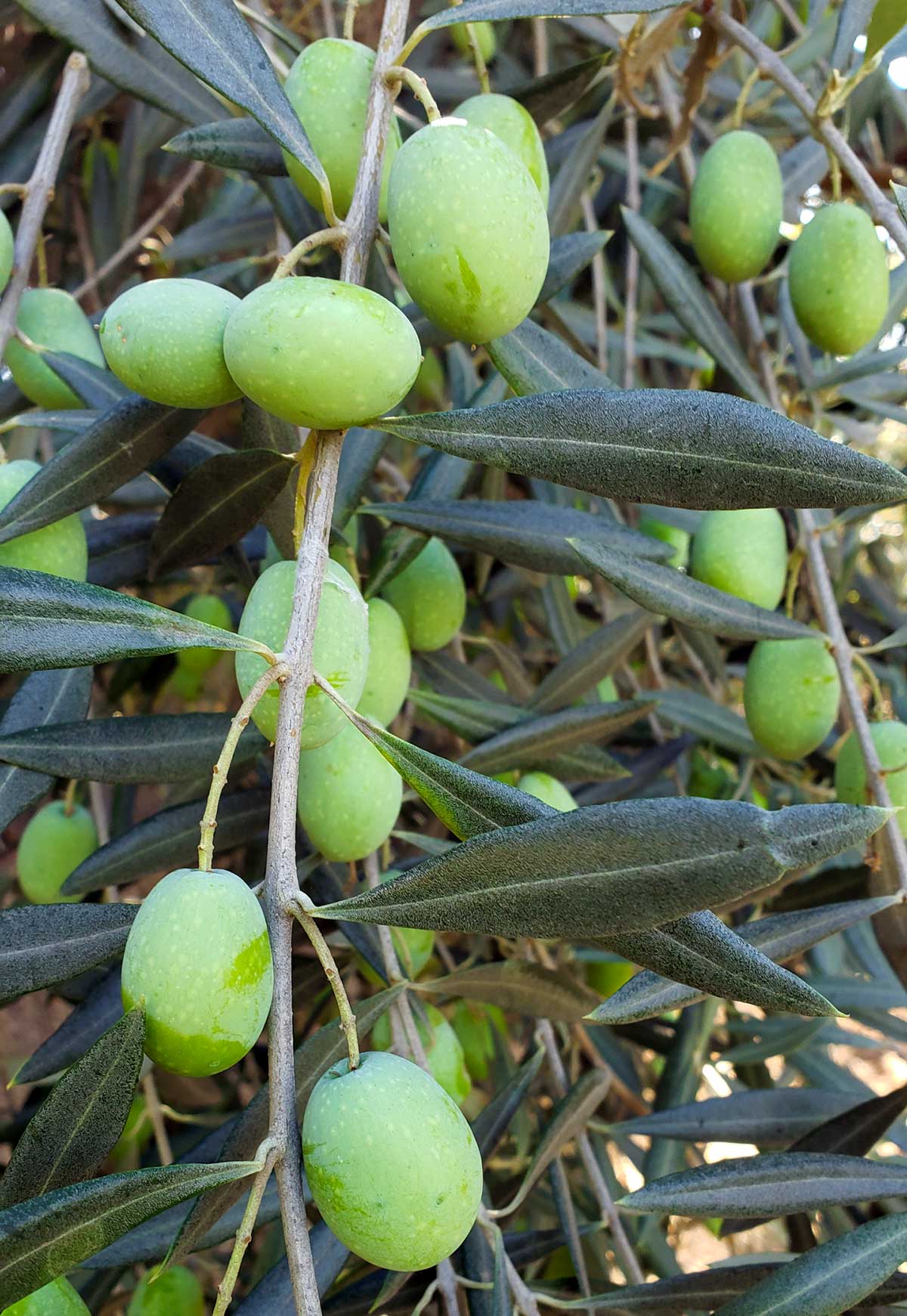
You can buy fresh olives online, and over the years I have provided links, but these companies seem to come and go quickly, so I don’t do that anymore. Just Google “buy fresh olives” around September here in the United States, and I think March in Australia.
The timing is important because you want fresh green olives. And yes, like peppers, all olives start green and ripen to another color, usually black in the case of olives.
Green, unripe olives are firmer and way more astringent than ripe ones. Brining olives when they are green is a great way to cure them, and green olives are the only olives suitable for what, admittedly, is my favorite cure, which a lye cured olive. That process, believe it or not, has been used for 2000 years, and is not as scary as it sounds.
You can brine ripe, black olives, too, just so you know.
My general rhythm is to cruise my local parks in late September or early October; they are full of olive trees, remnants of pre-suburbia orchards around here. On some crisp autumn Saturday, I go picking. Look for pretty olives, with few or no blemishes, and which are not wrinkled.
Tiny dots on an olive are OK, but many may be rotten with olive fly, whose larvae burrow into olives and leave a beige scar where they entered. that telltale scar means there is a visitor lurking within your olive.
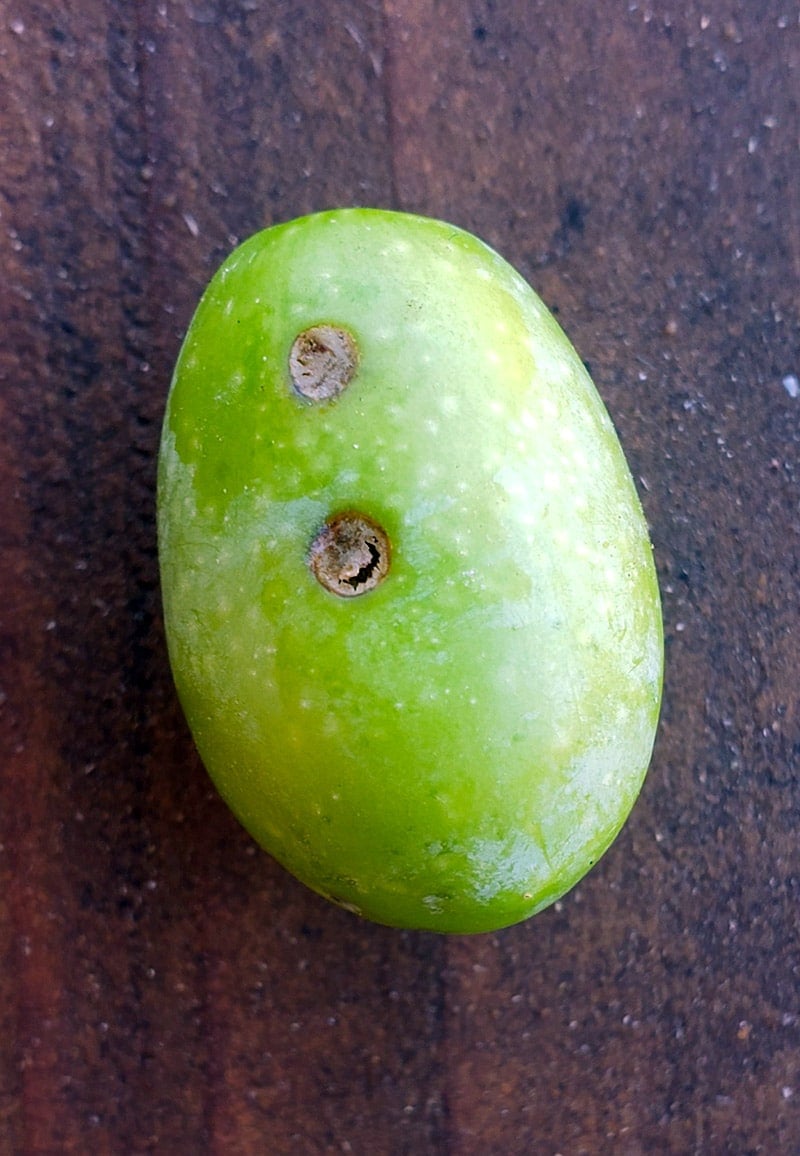
Another hazard are the dry olives. Trees forced to live by their own wits — away from regularly watered grass — are stressed, and their olives shrivel early. Shriveled olives are usable, but they bruise rapidly and don’t make a clean green olive.
When you get home, separate your olives into small, medium and large olives — it doesn’t matter what variety they are, as I don’t know how to tell the difference. If you don’t have enough large ones to make its own batch, mix them with the mediums.
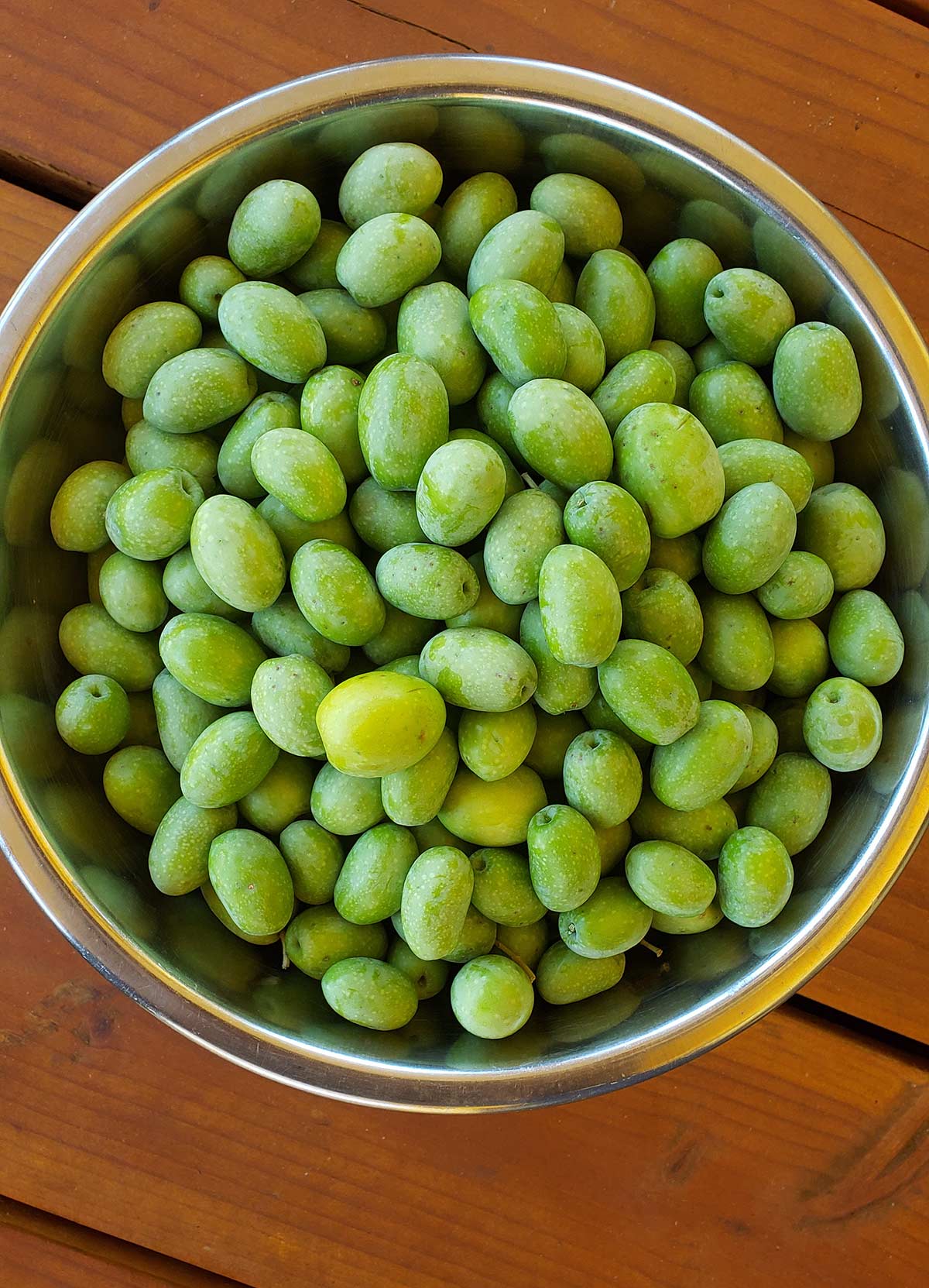
Unless I am doing the lye cure, brining olives is my preferred method, as it is low-maintenance and results in a super-tangy, salty olive that keeps for more than a year and cries out for beer or ouzo. And I like ouzo. A lot.
Brine-curing is easy, but takes a long time. You make a brine of 1/4 cup kosher salt (I use Diamond Crystal) to 4 cups water, plus 1/2 cup of vinegar: white wine, cider or simple white vinegar. Submerge the olives in this brine and top with cheesecloth or something else to keep them underwater. Do not cut them.
Cover the top of the container loosely (I use large, 1 gallon glass jars) and put the jar in a dark, cool place. That’s it. Check it from time to time — meaning every week or so at first. The brine should darken, and you might get a scum on the top. That’s OK.
What’s going on is that your olives are fermenting; it is the fermentation that breaks down the oleuropein over time. The what? Yeah, oleuropein is the astringent substance in an unripe olive. It needs to go if you are going to eat one. Fermentation is why I never wash my olives before curing — I want those natural yeasts on the outside of the olive to do their magic.
I change my brine every month or two, when it begins to look extra nasty. I don’t re-rinse the olives, during changes, either, because I want the residue to act as a “starter” to get the next batch of brine going.
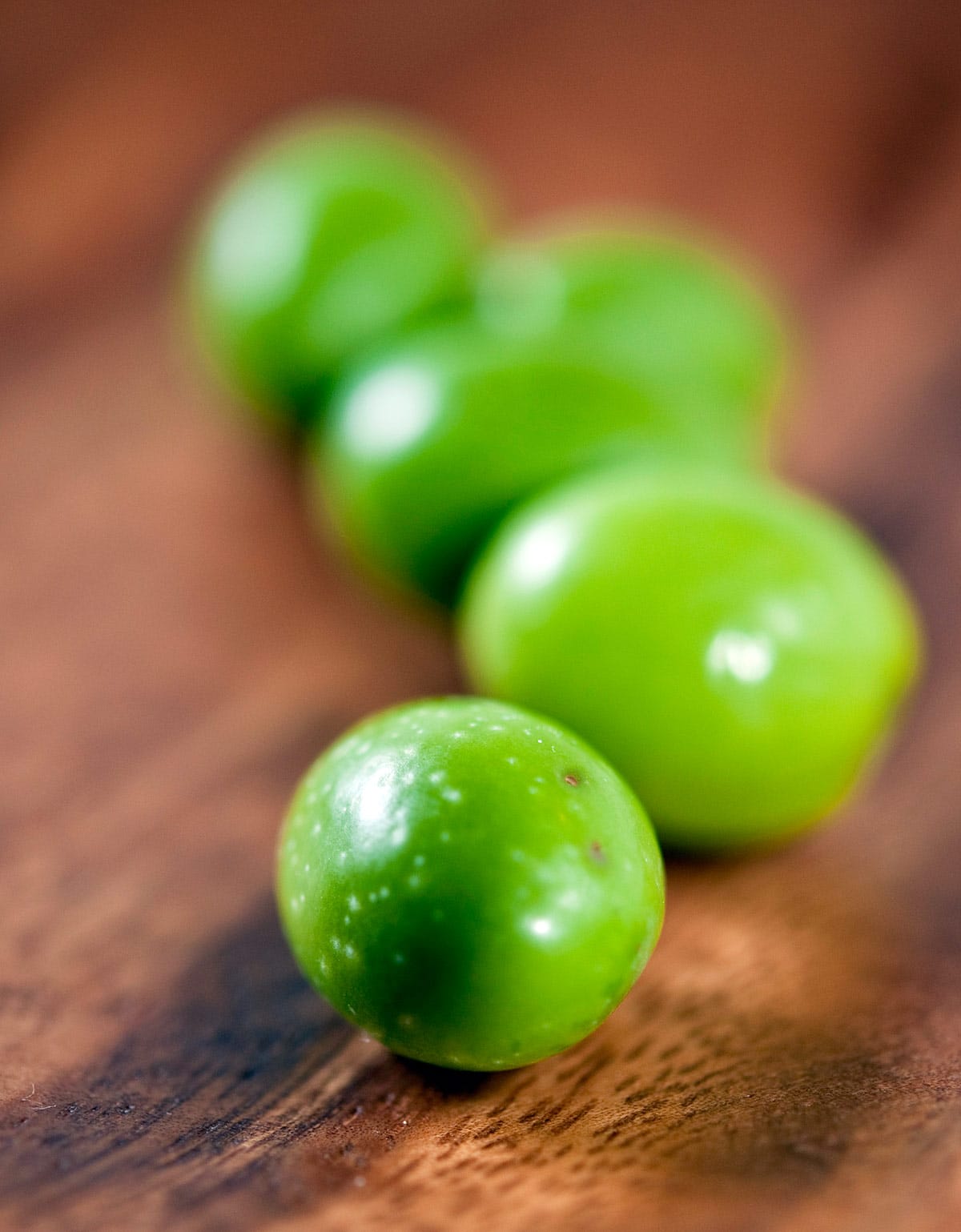
Keep in mind you will be in for the long haul: Olives picked in October are typically ready to eat in May or June. It’s a lot like making wine.
Add seasonings after the New Year, or even later, otherwise you risk too much spice and not enough olive flavor; this is especially true of chiles. If you find you’ve gone too far, change the brine and don’t add new seasonings, and let it steep for a few weeks. That should calm things down a bit.
Once the olives are finished, there is a certain show-off factor when you pull out a plate of olives you cured yourself. “These are your olives? Wow.” Plus, you can flavor them any way you like, which is a bonus.
If you’re too late for green olives, I really like salt cured black olives, which we all call oil-cured olives since that’s how they are stored. If you want to cure black olives, my method is to oil-cure olives.
Brine Cured Green Olives
Ingredients
- 4 pounds fresh green olives
- 1 cup kosher salt
- 1 gallon water
- 1 cup distilled vinegar
Instructions
- Assuming you've already checked your olives for worm scars (see headnotes), discard any with too many blemishes. Place the olives in a stoneware crock or large glass jar with a lid carefully. Fresh olives actually do bruise easily.
- Mix the vinegar, salt and water together. No need to boil, as it will dissolve at room temperature. Pour this over the olives, making sure they are submerged by at least 2 inches. Add more brine in the same ratio if need be.
- Chances are the olives will float. You need to keep them away from air, so I put a plate over them that is just about the size of the jar or crock. You can also use a plastic bag filled with water to keep the olives away from air. Once the olives are submerged, cover the jar or lid (lightly screw on the top if there is one) and place the container in a cool, dark place. A basement is ideal. You don't want them to ever get beyond 75°F if you can help it, because at higher temperatures the olives can go soft. Since this is a wintertime cure, it should not be a problem. Low temperatures are fine, just don't let them freeze. Let them sit for several months.
- As time passes, you will see a scum of mold and weirdness form on the top. This is normal. Skim it off once a week and you'll be fine. At some point the brine itself will get pretty icky. I like to change the brine every month or so, but this is not strictly needed. The olives are done when they are no longer bitter, anywhere from 2 to 4 months.
- Only now do you add other seasonings, like chile peppers, black peppercorns, herbs or citrus peel. Do this in a fresh brine, and let this new, flavorful brine sit 2 weeks before serving. Store the olives in this brine, in a cool place or refrigerator, for up to 2 years. I keep them in quart Mason jars.
Notes
Flavor Additions
- dried chiles
- bay leaves or similar aromatic leaves like citrus leaves
- thyme, sage, oregano, rosemary
- allspice, black peppercorns, juniper berries
- smashed garlic cloves
Nutrition
Nutrition information is automatically calculated, so should only be used as an approximation.

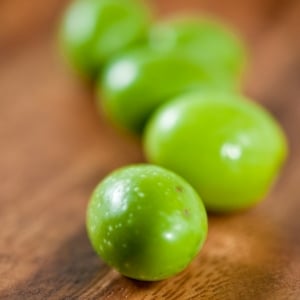




I tried this method a couple of years ago after picking a couple of buckets from wild olives in Hunter Valley, Australia. The olives turned out BEAUTIFULLY! Thought I had lost this page but rediscovered it.
I finished off with the brine mix + some malted vinegar. Olives are still good after three years.
Hi Hank,
Just discovered your Blog.
I planted about 20 olive trees down the driveway at my property at Dawesley, South Aust. about 5 years ago. Can’t remember whether they were oil or eating variety or both. Just let them go, with an occasional prune, very little watering. Just got back from overseas and noticed that all the trees are full of fruit for the first time. Tasted one and extremely bitter.
Any suggestions??
You reckon? That is GREAT – thank you for your prompt reply!
Brenda: Leave the olives on the tree. They will be fine.
My large black olives are ready to pick now and I’m going on holidays for two weeks. SO disappointing. If I picked them now, would they be ok to wait in the fridge, unbrined, untouched, until I get back? I brined olives last year and ended up having to get them babysat while I holidayed (slightly embarrassing to do that again). Any advice regarding the shelf life of raw / fresh olives? Much appreciated!
Brenda in Perth, Western Australia
I’m an avid mushroom hunter and forager (member of https://comafungi.org), and I love your stuff.
I live in the NYC suburbs. My local produce market carries fresh olives for a short time each year, but I’ve never bough them because I didn’t know what to do with them. Next time I see them I’m going to try the brine method – I even have an almost-empty huge jar of marinated artichoke hearts that I’ll keep for this project once I finish the contents.
In case any one else reads through comments and wonders about what I asked March 7, I pulled up the UC Davis info again and these questions are largely answered there.
I’ve got some olives that have been brine curing since fall using your instructions(changing salt brine every 1-2 months).
I’m finally getting ready to flavor them.
When you flavor them, I assume you continue to change the brine every 1-2 months until they are to your liking? and if so do you add fresh seasoning each time you change the brine?
And how do you store the brine cured ones? Once the flavor is how you like it, can you put them in a tightly closed mason jar in the pantry? Or do they need refrigeration as the water cured ones do? (I’m also wondering if I can mail them in a tightly sealed jar to out of town family/friends – or if once I tighten the jar – do I really need to refrigerate straight away?)
Great Post your so lucky to have them FREE and local.
Have you tried a cherry pitter? I find it works great on the brined olives i buy to remove the stones.
Why remove the stones, because i add the olives to a mix of olive oil, garlic, chilli and spices for a few weeks before serving. It takes the edge off the brine.
great site
Dhasa Bishop: Yep. They will be ready to eat.
Living in Colorado, we don’t have the luxury of picking olives. This year we ordered from Chaffin Family Orchards for fresh green olives, they also offer black olives for salt curing. They shipped in great shape, I highly recommend them if you need to order olives.
One Question about the water curing method. After water curing for a month, then adding brine, when are they ready to eat?
Thanks for posting the recipes.
Junelle: Could be any number of things, ranging from how old the olives were when cured to how long they were in the lye solution.
I bought some home cured olives cured using Lye and they are soft. What was the problem.
Fiona: Happens to me all the time. Change the brine.
Janet: You should be fine. It might take a while for the olives to de-bitter, but give it time and you will be OK.
Please help I left the olives in the refrigerator for 6 weeks. I also forgot to change the water every day, but did change it a lot. Then I rinsed them after and just put in the salt,water, vinegar, garlic, coriander water. Is it ok that I rinsed them or will I need a starter? Thank you so much!!!
Hi. I have some green olives harvested in Italy that I have been soaking in water, but not regularly rinsing and changing. They have been weighted down with a bit of cheesecloth which is now looking rather disgusting around the edges. I am worried about warnings of botulism. The olives themselves look fine so is this normal and are they likely to be alright?
Rebecca: Yes, I put them in the fridge. They can keep in the fridge for several months. I don’t recommend the fork method, as it bruises the meat around the holes and does not open up the olive enough to the fresh water.
Hi Hank- for the water-cure method, once you start the brine, do you put them in the fridge? How many months would you say they should sit in the brine? Also, instead of cutting each olive at first, I poked a fork in each one. They have been changing color rapidly, starting where the pokes were and moving out. They don’t look all that pretty, but maybe they eventually turn a dark/purple brown all over? Is that how they are supposed to look?
thanks so much for this info!
I put about 10lbs Servillano olives, bright green and all larger/medium, into Lye in a 2 gal ginger jar at 6 tbl spoons and a gallon of cold water. Tested them after 18 hours, and they were cured to the pit, but not too soft. I leeched out the Lye by dumping, rinsing, and re-soaking in cold water every morning for 4 more days. On the fifth day, the Lye seemed to be gone, and the leech water was clear for 24 hours. The olives tasted very bland., but they were still firm enough and were a pretty/even green color, somewhat darker than when raw. This turned out to be much easier than I anticipated.
This morning, I mixed 1 cup of pickling salt and 2 cups white vinegar in one gallon cold water, and returned the whole batch to the ginger jar. I put it on a cool dark shelf in my pantry and will take another look-taste in a week.
Wish me luck!
Watch it on the freash Rosemary, my olives taste like Christmas.